Top Drawer Thrift plans move from Burnet Road after rent nearly doubles
Top Drawer Thrift buzzes with activity on a Wednesday afternoon in early August. Hand-written signs boast deep discounts at the secondhand utopia on Burnet Road: Thirty percent off housewares. Fifty percent off electronics. Fifty percent off all red-lined merchandise. Below a ceiling festooned with a vibrant array of Pride flags, shoppers peruse the store’s collection of clothing and curiosities to a soundtrack of disco deep cuts from the ‘70s and ‘80s.
In the center of the store, a table is crammed with misfit toys. A kung fu teddy bear, a well-armed Wookie and a cherubic porcelain violinist rub elbows with a terrifying selection of faded clowns. For years, the whimsical cohort watched over the store in miniature cases on the back wall. Now, for $3 a pop, they are in search of new lives as souvenirs. After 30 years in a Barbie pink building topped with an off-kilter bureau befitting a dandy cartoon giant, Top Drawer is moving.
Opened in 1993 to benefit Project Transitions — a local nonprofit that provides hospice care and transitional housing to HIV and AIDS patients struggling with homelessness — the store will close at the end of the month and reopen in September on Airport Boulevard.
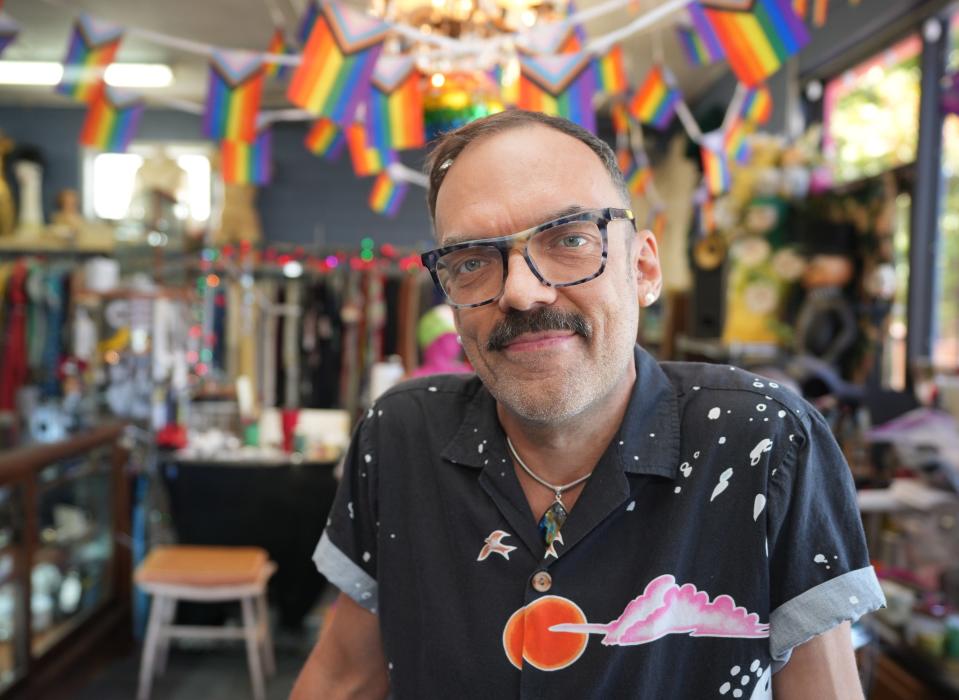
'We revitalized where we live and then priced ourselves right out of it'
Savvy thrifters have long appreciated Top Drawer’s artful curation. Alongside everyday tableware, the store sells opulent goblets and rare china. They stock an astonishing array of archaic audio equipment that currently includes a dusty Army plane radio from the 1940s. On the clothing side, pricier finds like a $150 Loro Piana reindeer suede skirt (which sold for well over $1,000 retail) are tucked in among bargains on trendy duds and well-made basics.
“We get really, really great donations,” says Ben Zimmerman, Top Drawer’s social media and e-commerce manager. “I mean, you can still come get a new outfit for like 12 bucks, but you can also get, you know, a $200 vintage dress that you'll never ever see again.”
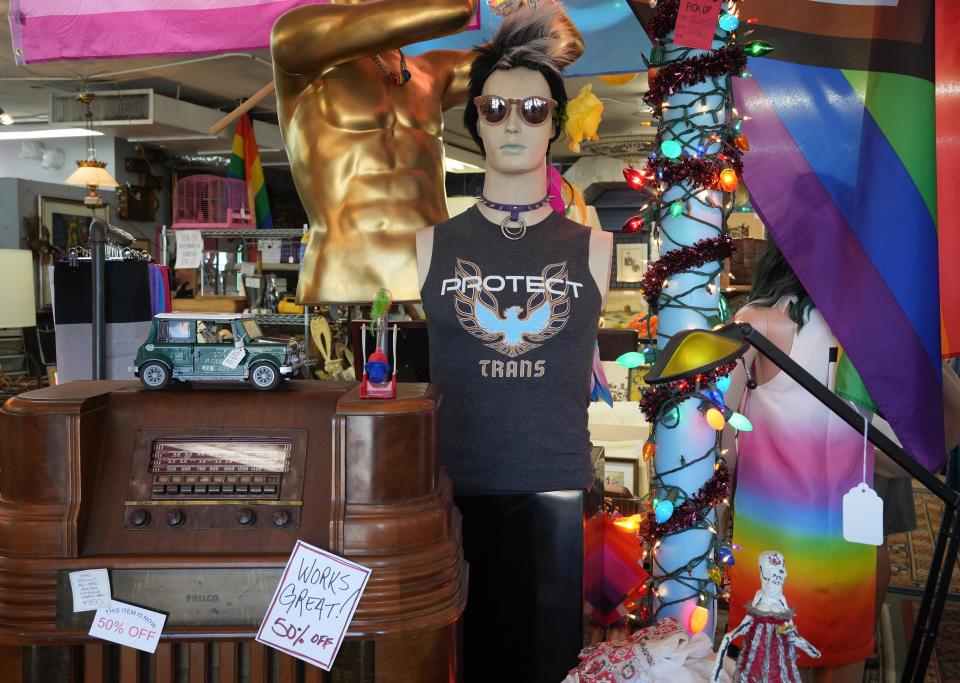
The merchandise is high quality by necessity. Because of the store’s small space, they have to “pick and choose” what they put on the floor, Zimmerman says. Donations that might not sell quickly get shipped off to partner organizations and other nonprofits.
Like all retail businesses, Top Drawer was forced to pivot during the pandemic shutdowns of 2020. “We had to have an online store and we had to do social media like we had never really done before,” Zimmerman says.
The efforts paid off. Reaching out to longtime supporters on the internet, they attracted new customers, including socially conscious young shoppers who were inspired by Top Drawer’s mission and excited about their wares. But “the huge surge” of business upon reopening was not enough to overcome a rent increase that would have made the store's monthly payment a staggering $15,000, nearly double what the nonprofit was paying for the space.
More: Secondhand shoppers rejoice! A guide to vintage shops, thrift stores in Austin
"That is just not a number we can sustain," Zimmerman says. "I have healthcare and housing to provide to people in need. 25-30% off the top is just too big a bite out of our fundraising mission."
Burnet Road was once Austin’s premier resale shopping destination, characterized by strips of quirky small businesses and thrift stores. Now, many are moving out, replaced by higher end boutiques and national chains. Top Drawer helped revitalize the neighborhood, Zimmerman says. And then, “as lots of small businesses do, we revitalized where we live and then priced ourselves right out of it.”
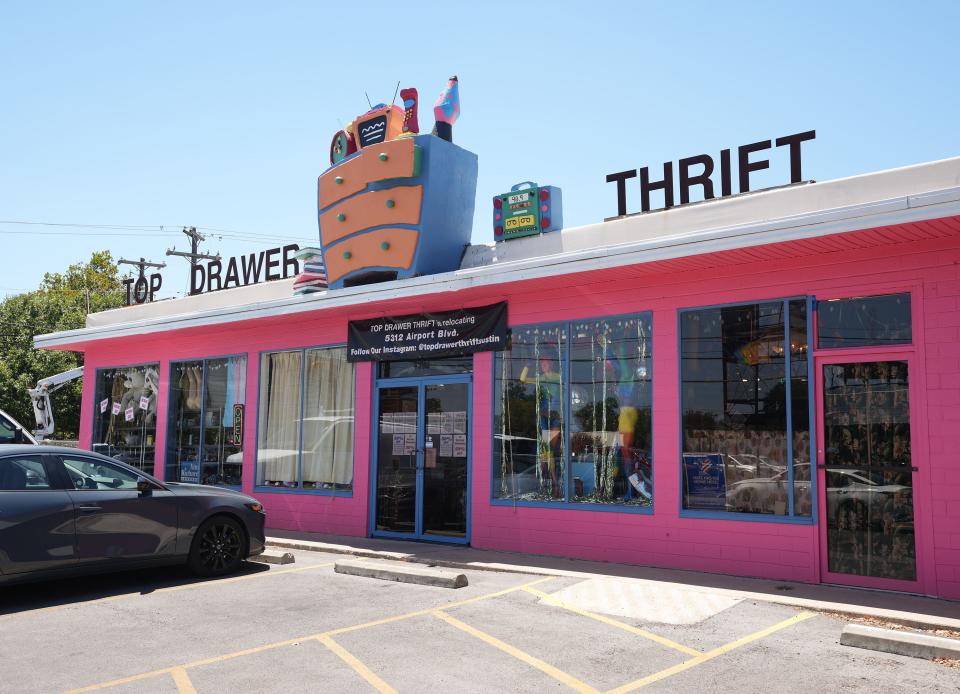
Top Drawer opened during the height of the AIDS crisis
In 1992, the year before Top Drawer opened, the Austin American-Statesman published a gut-wrenching article headlined “The faces of AIDS.”
“It was the height of the crisis,” Zimmerman says, “and people were dying.”
“Almost every other day last year, one person in Travis County died of acquired immune deficiency syndrome,” the Statesman reported. The article featured emotional remembrances of doctors, artists and students — beloved sons, partners and friends. (At that time, the vast majority of AIDS deaths in the area were among gay men. The “so-called face of HIV’ has changed dramatically over the years, Zimmerman says.)
More: ‘Keep Austin Queer’d:’ Why is Austin Pride celebrated in August? What you need to know
Project Transitions was founded as a residential hospice facility where people in the final stages of the disease could receive compassionate care. Doug Key, a community activist who was a core member of the founding team, was among those remembered in the 1992 Statesman article. After his death, the hospice was renamed Doug’s House.
“People didn't know what to do and didn't know how to help,” Zimmerman says. Community members began donating clothing and other things people might need “to give to people that were caretakers and people that were dying.”
The outpouring of support exceeded the hospice’s needs. A board member had the idea to start a thrift store with the stockpile of excess goods. In its early days, the shop was just a small storefront with the nonprofit’s administrative offices in the back. Like the hospice facility, it was run entirely by volunteers.
These days, the store has two full-time employees (including Zimmerman) and two part-time employees, but volunteers remain the heart of the organization. “Everybody in this building right now is either a volunteer or started off as a volunteer,” Zimmerman says.
Between staff and members of the volunteer team, the core group at Top Drawer has “literally hundreds and hundreds of collective years of service to this organization,” he says. “So we're all very passionate about what we do here. And I feel like you can tell that when you walk in the door. It's just like a big hug.”
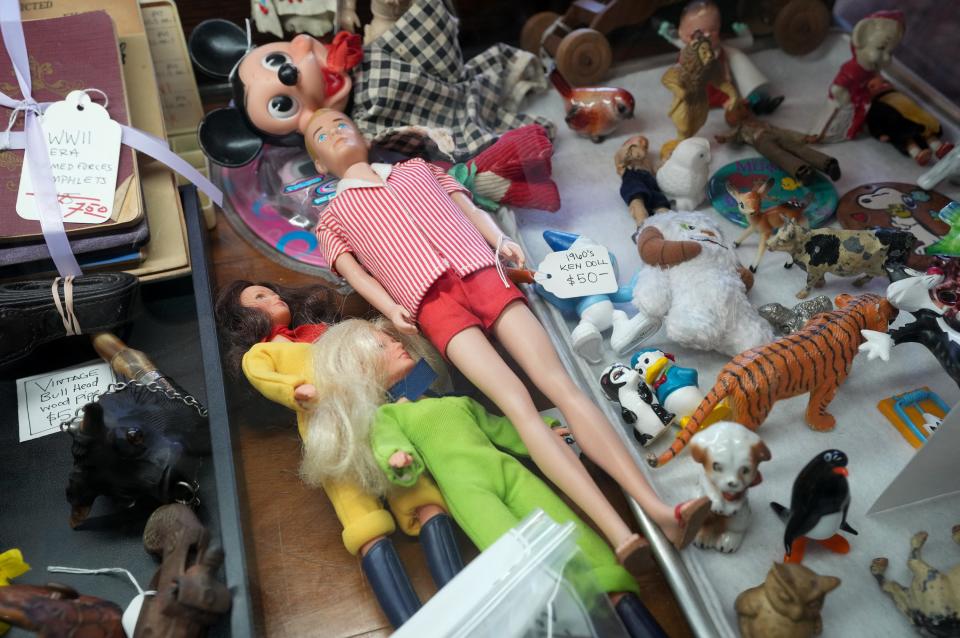
Stable housing a priority for people living with HIV
Top Drawer’s work has been integral to the growth of Project Transitions. As treatments for HIV improved and people began living longer, leaders of the nonprofit realized that safe, affordable housing is essential for good health outcomes. In 1995, they opened Roosevelt Gardens, a supportive housing facility for individuals and families living with HIV. Proceeds from the store supported the project.
As Project Transitions has evolved, housing has remained core to its mission. The organization recently redeveloped Roosevelt Gardens, nearly doubling its capacity. A new project, Burnet Place, will add another 61 units of safe stable housing when it opens.
Even at the hospice, the focus has shifted. In addition to end of life care, the facility provides recuperative care to people with HIV who are experiencing homelessness.
“Somebody needs help. They come to our hospice and our house and they have a much stronger chance of survival,” Zimmerman says. Individuals might not be on the right medications or they might need surgery. “Living on the streets and not having access to healthcare, how are you going to be taking your HIV medications every day and getting them every month? And, what, do you carry them around in your backpack?”
A 2020 City of Austin study counted more than 300 people with HIV who were experiencing homelessness and not treating the virus. Another 1,800-2,000 people with HIV were struggling to maintain their housing or facing an imminent risk of eviction. In 2022, the city conducted a randomized HIV needs assessment, collecting data from people seeking medical care, HIV drug assistance or other services at the city’s HIV service providers; 30% of respondents said they believed their housing situation was unstable.
Burnet Place will have on-site rooms that providers can use for doctor’s appointments and therapy sessions, eliminating the problem of transportation by bringing care directly to clients. Although each apartment has its own kitchen, a communal kitchen and group space will encourage social interaction and help people “relearn how to interact with people, and share space, to cohabitate,” Zimmerman says.
The goal is a successful transition from the streets to supported housing and “then back ultimately, on their own in greater society,” he says.
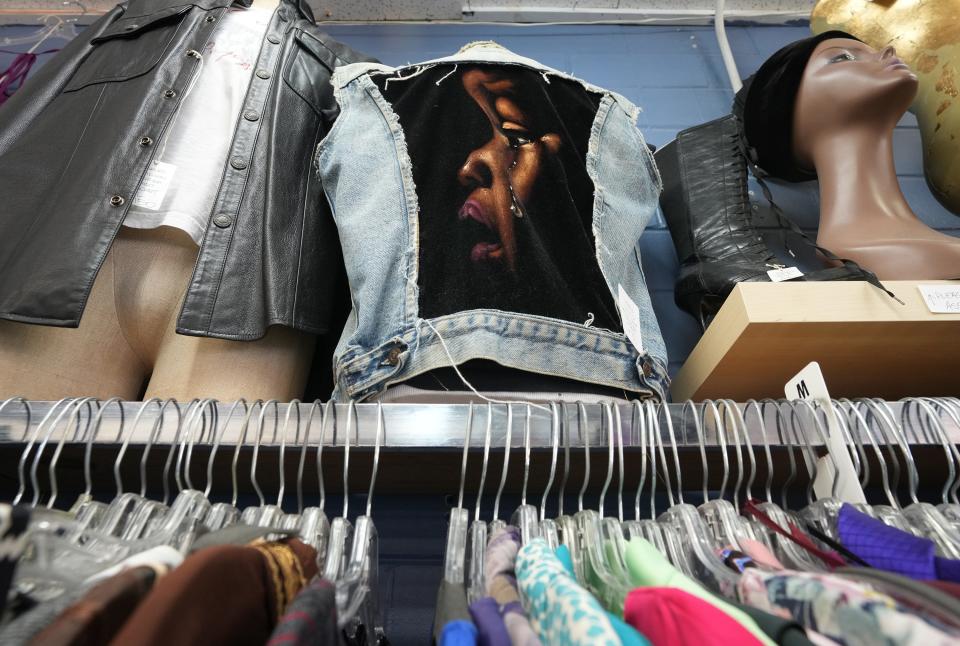
‘We need Top Drawer to continue humming along in its wondrous style’
Unlike some thrift stores where a percentage of sales go to charity, all sales from Top Drawer go directly into the Project Transitions fund. While the move is bittersweet, it will reduce store overhead and put more money toward the nonprofit’s core mission.
The hospice facility Doug’s House receives 45% of its funding through grants. Top Drawer sales account for a lion’s share of the remaining 55% of operating expenses, says Todd Logan, Project Transitions’ director of grants and compliance. While Project Transitions has received housing grants from the city and state to help with Burnet Place, “adding 61 new apartments is going to take a lot of new staff to support,” he says. “We need Top Drawer to continue humming along in its wondrous style following this move.”
More: Love is in the air as Austin LGBTQ+ couples tie the knot on Marriage Equality Day
The new store will be at 53rd Street and Airport Boulevard in the rapidly developing industrial strip south of the Austin Community College Highland Mall campus and adjacent to the North Loop shopping district. To minimize overhead, the space will include both the store and the Project Transitions administrative offices.
As staff and volunteers prepare for the move, Top Drawer is still accepting donations, but new merchandise will be packed up to stock the new location. Meanwhile, discounts at the current store will continue to get steeper through the end of the month.
The store is accepting donations to help defray moving costs and there will be a call-to-action day on August 28 for community members who want to help with the move. When the iconic dresser comes down from the roof, fans of the store will have a chance to pose with it before it goes on the roof at the new store. (Follow Top Drawer's social media accounts for details on the photo op.)
Zimmerman is optimistic about the move. “I feel like that part of town really needs some life and some vitality,” he says.
And he is confident that the spirit of the store will not be broken.
“We'll take little bits and pieces of (the store) with us. And then we'll share little bits and pieces with our friends and our family on our way out the doors here,” he says.
In the new space, “we’ll kind of take those little bits and pieces and cobble them together and let them grow and flourish.”
This article originally appeared on Austin American-Statesman: Austin resale utopia Top Drawer Thrift is moving after 30 years

